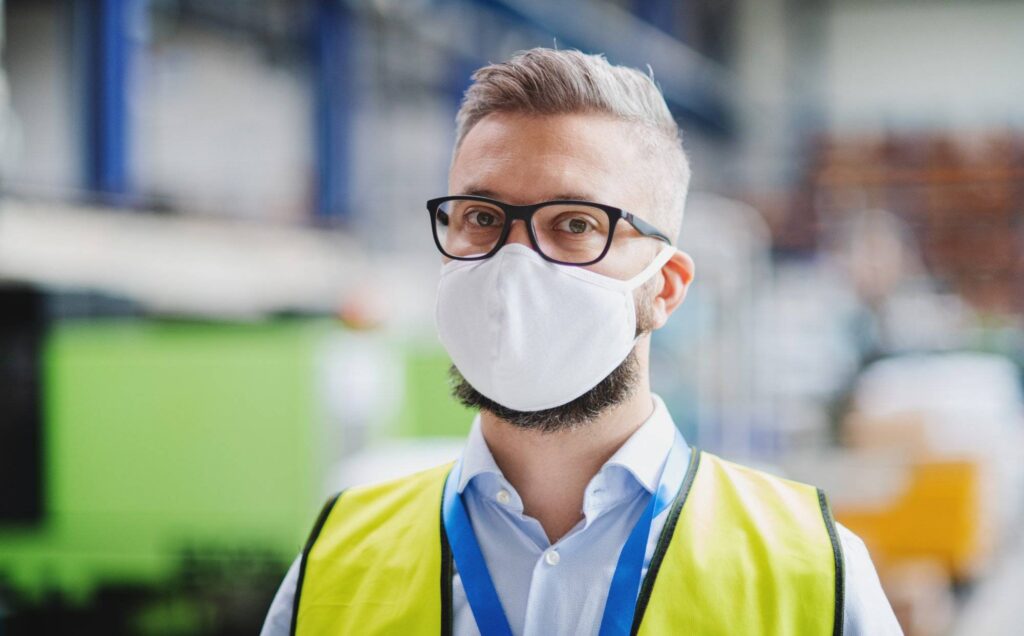Working With Lead and Handling Lead Safely

There is no cure for lead poisoning or the permanent damage it may cause. Even in the form of lead dust, it can gather on your clothing and skin. If it’s inhaled or ingested, it can cause serious damage to the lungs, kidneys, nervous system, intestines, and reproductive system. Lead is an extremely toxic substance […]
Stay Safe When Working With Flavorings

As a manufacturer of food products, it’s important to stay safe because you can come into contact with many different ingredients and flavorings. Even though some chemicals you work with are safe to eat, they can cause eye, lung, or skin disease if you are not properly protected while you are touching or working around […]
Adjusting to Your New Work Environment

A walk through other areas of the workplace is a common occurrence, but it can also be dangerous if you don’t stay alert. This is particularly true for employees leaving their old, familiar departments and moving into a new work environment. New employees receive instructions regarding training and safety precautions. However, when transitioning roles to […]
Conveyor Belts: Safe Use

Unnecessary workplace accidents can occur when employees do not think before they act or avoid taking precautions to prevent accidents. Keeping safety top of mind is especially important when working with potentially dangerous machinery like conveyor belts. In fact, the Occupational Safety and Health Administration frequently cites conveyor belt accidents as one of the top […]
Stay Safe in a New Place

Moving to other areas of the workplace is a common occurrence, but it can also be dangerous if you don’t stay alert. This is particularly true for employees leaving their old, familiar job titles and transitioning into new roles in other areas. Staying safe in a new place can be challenging and require you to keep […]
Manufacturing Safety: Learn How to Handle Chemical Spills Safely

Provided by: Three Sixty Safety Learn How to Handle Chemical Spills Safely Working with chemicals on the manufacturing floor puts all employees at serious risk for injuries due to explosions. For this reason, the Occupational Safety and Health Administration (OSHA) requires worksites where hazardous chemicals are used to have an emergency action plan (EAP). The […]
Manufacturing Safety: Proper Use and Care of Respiratory Protection

Provided by: Three Sixty Safety Proper Use and Care ofRespiratory Protection Wearing respiratory protection may seem inconvenient, but airborne particles and contaminants—no matter how small—can cause both short-term and long-term health problems if proper use and care of respirators is not exercised. Respirators protect employees from areas with insufficient oxygen, harmful dusts, fogs, smokes, mists, […]
Manufacturing Safety Matters: The Importance of Keeping Clean on the Floor

Provided by: Three Sixty Safety The Importance of Keeping Clean on the Floor Often, our workplace is full of action with many workers performing different operations simultaneously. Imagine the chaos that would result if workers did not clean up after themselves. The manufacturing floor would become a hazardous obstacle course as trash and debris piled […]
Manufacturing Safety Matters: Avoid Accidents on the Plant Floor

Provided by: Three Sixty Safety Avoid Accidents on the Plant Floor While manufacturing is a much safer industry now than it was in the past, there are still hazards within the workplace. However, many on-the-job accidents can be avoided by focusing on safe practices and taking necessary precautions. Most accidents are caused by an unsafe […]
Construction Safety Matters: Work Site Scaffolding Safety

Provided by: Three Sixty Safety Work Site Scaffolding Safety The majority of scaffold accidents on construction sites are caused by falls, slipping or being struck by an object from above. All of these accidents can be prevented by taking the proper precautions. Review this guide to learn more. General Safety Tips Protection for Those Below […]




